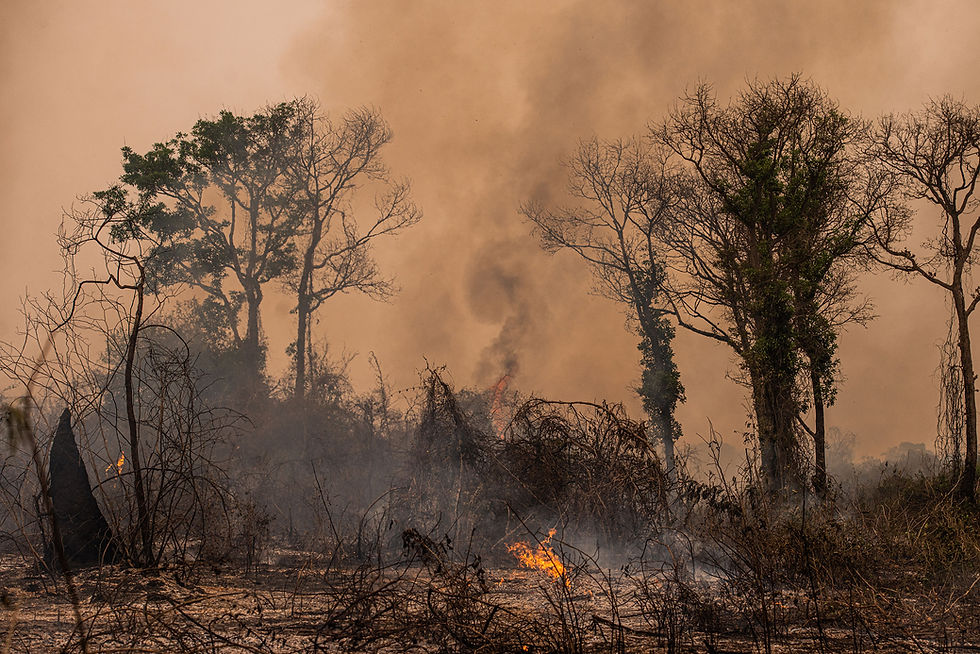
Project Outputs
A Credit generation is expected of 12,700 per year (10,000-18,300) Considering Credit Prices ranging from $8-$16, the total project income over 30 years is expected of $4.57m ($2.78m-$8.08m).
Under the standard analysis scenario, the project is expected to generate ~380,000 credits over a 30-year period. This equates to an annual average credit generation of ~12,700 per annum and ~63,500 per 5-year period.
Cost-benefit analysis
A cost-benefit analysis was conducted for annual emission reduction (ER) scenarios, considering five scenarios based on the adjustments to defined parameters. As per the release of this report, a total budget of $982,000 has been considered, with a community revenue share of $2.74m ($1.65m-$5.78m). As a result, the project has a high probability of been financially viable and for generating income to local community whilst combatting deforestation.
The project's detailed budget and cash flow forecast were provided and analysed to validate the expected costs for the proposed 30-year duration of the project. Based on our recommendation of using the Plan Vivo standard, we conducted an analysis using the information provided within the Plan Vivo documentation regarding program fees. The assessed project expenses include i) Credit levy, ii) Plan Vivo Review Fees, and iii) VVB Costs. The table below summarises this information at the 5-year, 15-year and 30-year mark, as well as to identify the cost in Year 0 of the project (Set-up Costs).


Risk Analysis
Under PV Climate, an automatic Risk Buffer of 20% is applied. This means that 20% of credits generated are held in a ‘buffer pool’ and are not eligible for sale. Credit estimates reported have excluded credits that are expected to be assigned to this ‘buffer pool’. Beyond this risk buffer calculation, risks have been identified and analysed using guidance from the VCS AFOLU Non-Permanence Risk Tool, v4.210 , as a means of analysing risk across project management; financial viability; land tenure; community engagement; political risk; and natural risk. A selection of key risks have been selected in Table 3, with potential mitigation procedures addressed.
Assumptions
In order to calculate the expected performance of the project, a number of assumptions and estimation have been made. In order to investigate multiple potential scenarios, sensitivity analysis has also been performed. Six parameters have been identified for sensitivity analysis, five of which are related to the generation of credits (Deforestation Rate, Forest Area Adjustment, Leakage, Uncertainty, and Project Effectiveness). The sixth parameter, Credit Price is related to the overall income of the project.
Forest Area
Adjustment
Due to uncertainty in the land classification of the project area, the calculated initial area of forest has an adjustment factor applied, reducing the area considered for calculation of carbon credits. The initial value has been generated based on a sample visual analysis of the dataset, providing an adjustment factor of 0.85. To explore any errors in this analysis, a range of 0.75 to 1.00 has also been investigated.

Deforestation Rate
Deforestation Rate has been assessed based on multiple sources, primarily the ESA WorldCover Data, and Global Forest Watch. Using these sources an expected project deforestation rate of 0.90% has been calculated. To investigated uncertainty, an upper value of 1.03% and a lower values o 0.31% has also been investigated.

Leakage is assessed based on the expected emissions that occur during the baseline scenario, that will continue but be shifted to another location. Due to the nature of the project, we anticipate minor impacts from leakage. This is due to large parts of planned deforestation being dependent on landowner considerations. We see the project as a way to change attitudes in the region and develop alternative sources of income. In terms of the unplanned elements of the project, it is anticipated that our community outreach programme will provide the necessary incentives to prevent continued deforestation, inside as well as outside the project area. Regardless, we have attempted to be conservative with these above considerations and have set leakage at 15%, with sensitivity analysis ranging from 5% to 25%.
Leakage
Uncertainty represents the potential variation in actual results compared to results reported by the project. The final uncertainty is assessed on the data collected from the baseline and project surveys. As we will be following best practice and incorporating advanced remote sensing monitoring into the final estimates of the project, it is anticipated that the Uncertainty would fall below the 15% range, as such, this value has been chosen as conservative. In addition, a value of 0% has also been explored should the project meet certain requirements that allow for no uncertainty to be discounted.
Uncertainty
An important parameter in determining the Ex-Ante calculation of REDD projects is project effectiveness, the amount by which a project is able to reduce deforestation. It is highly unlikely that a project will be able to prevent all deforestation in a project area, however communitybased projects can have significant benefit. As such, an assumed value of 0.7 was used, with a range of 0.5-0.9 also investigated.
Project Effectiveness
Compared with other standards, such as Gold Standard and the Verified Carbon Standard (VCS), Plan Vivo is able to command a higher price due to a focus on community and smallholder benefits. As such, the standard price for a Plan Vivo REDD credit has been set to $12 in order to determine project revenue. In addition to this, iteration at $8 (which more closely reflects VCS prices), and $16 have been investigated.
Credit Price